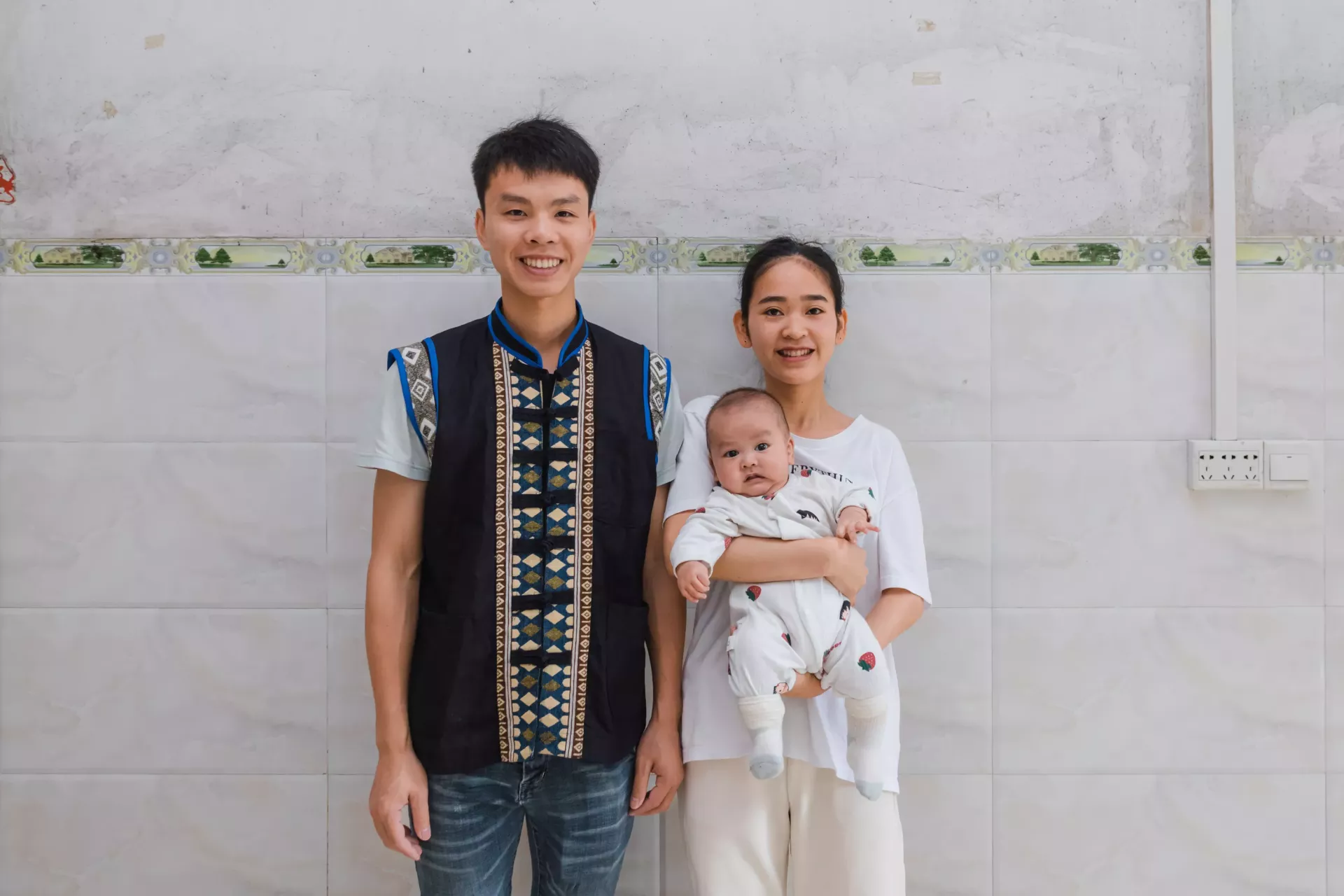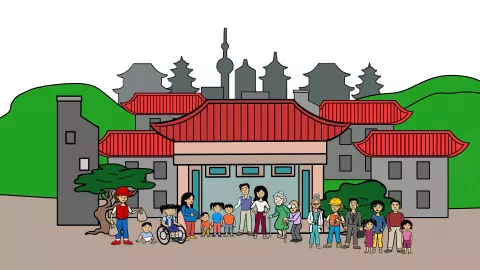How to foster a caring society for children and families in China
Reimagining Social Policies to Support Families in China

- Available in:
- 中文
- English
There have been significant changes in the population and society in China over recent decades. The birth rate has declined, and the population has aged. The average family size shrank from 3.1 people in 2010 to 2.8 in 2022[i], and the one-child policy has been reversed. Urbanization, rural-urban migration and the growth of the informal sector have changed how people live and work. Gender inequality persists, with women frequently facing discrimination and barriers to employment. All these changes have implications for family policy – statutory policies and government-led programmes that aim to improve conditions for adult family members, particularly those caring for children up to the age of 18.
A new report, ‘Reimaging Social Policies to Support Families in China’ by UNICEF synthesizes the context and challenges of family policies in China and reviews over 180 evaluations of family policies worldwide. The report highlights case studies of policies that could be adapted and incorporated into family policy in China, and it identifies implications for designing and implementing innovative policy.
Watch how UNICEF China is advocating for comprehensive family policies for every child.
The report’s key findings include:
- Family leave should be designed in a gender-neutral way, where each parent has an individual right to claim a benefit, allows families to optimize their household’s leave-taking decisions. In California, paid family leave can be taken by either parent, which strengthens job continuity among mothers when the other parent takes parental leave.
- Cash transfers have the potential to improve living conditions, food security and use of childcare programmes among beneficiary households. Families can permanently improve their situation by investing part of the cash in productive assets such as animals and land. It can also empower women in households and increase their sense of autonomy. Mexico’s PROSPERA, conditional cash transfer programme has been shown to improve not only health, nutrition and education of children, but also livelihood and food security of the entire household.
- Low-cost, state-subsidized childcare should be made available for children under 3 years old. This reduces mothers’ employment interruptions, particularly after the birth of a second child, and it increases the probability of mothers returning to part-time or full-time employment. This is seen in Germany, where public childcare provision was expanded for children under 3 years old.

Designing policies that work
The family is the best place for children to grow and develop, so we need a comprehensive package of family policies that is guaranteed for all families, covering family income, time for parenting, and quality care services. This package needs to prioritize vulnerable households.
Globally, family policies differ significantly across countries, and they respond to unique social, economic and cultural circumstances.
The UNICEF report focuses on policies that directly help families bring up children, defined in three areas:
- Time: workplace policies, such as maternity, paternity, and parental leave, as well as flexible working arrangements.
- Financial: parental or child benefits such as tax breaks and benefits for families with children, as well as non-contributory cash transfer programmes (meaning the beneficiary does not contribute to the scheme).
- Services: care services, such as childcare counselling services and home visits by nurses.
Situation in China
A few statistics provide a snapshot of the situation in China:
- The latest data from the National Bureau of Statistics show that in 2023 15.4 per cent of the population was 65 years or older.[ii] The average life expectancy was 77.9 years in 2020.[iii] The dependency ratio[iv] of people aged 65 and over was 21.8 per cent in 2022, which more than doubled from 2002 when it stood at 10.4 per cent.
- The dependency rate of children aged 0-14 years decreased from 31.9 per cent in 2002 to 24.9 per cent in 2022. This means that fewer children will need to support more elderly people, so we need to invest in children to maximize their potential.
- According to the National Health Commission, over one third of families in China with children aged 0-3 years need childcare, but only 5.5 per cent of children aged 0-3 years are enrolled in childcare centres[v], compared to over 30 per cent in OECD countries.
- Female employment rate in China is among the highest in the word, in 2022 it’s 43.2 per cent[vi], but women are more likely to voluntarily or involuntarily exit the labour market, and they face greater difficulties in returning to their positions. According to consulting firm McKinsey, during COVID-19, the proportion of women leaving the labour market was 4.3 percentage points higher than that of men.[vii]
- A recent report by the International Labour Organization (ILO) and UN Women shows that in China women spend around 2.5 times as much time as men on unpaid care work.[viii]

Existing family policies
There are the following policies, mainly at national level in China:
- Workplace policies: The national standard for maternity leave is 98 days, and in most provinces this number has been increased. Paternity leave and parental leave policies range from 5 to 20 days.
- Parental or child benefits: Maternity insurance is determined by local governments in accordance with regional economic development levels. There is a standard individual income tax deduction for childcare for children under 3 years old of RMB 2,000 per month.
- Care services: there is a one-off allocation of RMB 10,000 per early childhood care (ECC) slot/place to support the development of universally beneficial ECC services.
Recommendations
The UNICEF report makes the following policy recommendations for developing innovative family policies in China:
- Expand the coverage of maternity leave and set up a minimum standard for maternity insurance, especially for migrant workers and female workers in the informal sector.
- Explore integration of early childhood care and kindergartens, including establishing effective nationwide regulations; encourage local governments to explore supplementary options to better target families in need.
- Consider adjustments to policies and institutions (schools and communities) beyond family policy itself. For example, reforms in pensions, Hukou household registration, labor protection and gender equality policies. Young parents’ pressure from economic burden, career development and perception of marriage, family and gender needs to be addressed.
- Ensure that family-related policies enable families to support both young children and elderly family members.
- Differences in family policies at the local level must not widen the income gap between regions, or between urban and rural populations. This will require supporting local governments with adequate human and financial resources.
Find the full report here: Reimagining Social Policies to Support Families in China
[i] https://www.stats.gov.cn/sj/ndsj/2023/indexeh.htm
[ii] https://www.stats.gov.cn/sj/zxfb/202401/t20240117_1946624.html
[iii] https://www.stats.gov.cn/sj/ndsj/2023/indexch.htm
[iv] The dependency ratio relates the number of children (0-14 years old) and older persons (65 years or over) to the working-age population (15-64 years old). Dependency ratios indicate the potential effects of changes in population age structures for social and economic development.
[v] http://www.xinhuanet.com/politics/2021-07/21/c_1127679834.htm




